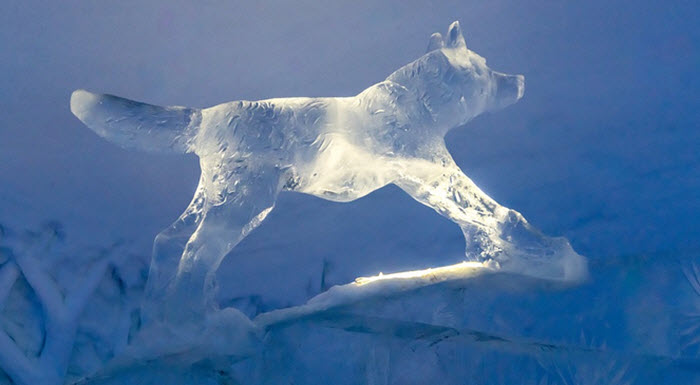Winter time is upon us, the great white tide has rushed in and, ohhh baby, it’s cold outside. You sit there staring out of the window, watching the permafrost form on the glistening glass panes, wondering what to do with your time.
Fret no more, as the solution is here. We’ve all seen those fabulous snow sculptures, whether in pictures, at displays or in your exceedingly talented neighbour’s back yard, but you’ve probably never considered making one single-handedly, right? Why not? You’ve probably been thinking that it’s far too difficult, or that you lack the skills and require some special form of innate talent, right? Wrong.
The truth is that making a snow sculpture need not be any more difficult than building a snowman, and the chances are that, with some imagination, even your four-year-old niece can do it.

So where do you start?
Well, here’s to stating the obvious: naturally, the vital ingredient necessary for this project is snow. However, not every type of snow will do. No problem, though, because if the type of snowfall is not ideal that can be easily fixed.
The type of snow that is ideal for sculpting is snow that is slightly wet and that has sat around for a few days and sticks together easily when you try roll it into a ball. A fresh dust-like snowfall just won’t do, but don’t let that dampen your excitement about the first fall. In this case you have two options: wait a couple of days for the snow to melt a little, or, if your eagerness has you itching to begin as soon as possible, and the idea of waiting is just not bearable, mix the snow with a little bit of water.
OK, now that the snow issue is clear, what next? You can use a variety of different tools, depending on what you’d like to create, how much detail you want to go into and what you have to hand. We’ve listed a number of items that we think should form the basics and make the job easier, but these should serve merely as a guideline and are by no means necessary.
You’ll need a shovel or spade, something to transport or carry your snow (buggy, wheelbarrow, buckets), something to pack the snow in (moulds, boxes, buckets, coolers), and carving and shaping tools (wooden planks, saws, chainsaws, trowels, blades).
Now you’re set to begin! Find a spot for your sculpture and start shovelling and bringing in the snow. You could start with forming a mound, and flattening and shaping it freehand, dampening the snow as and when necessary to make it stick. However, we’ve found the best method to go about it is to make ‘bricks’ which can be packed down in their moulds/ buckets/ coolers, turned over and placed on top of each other. This will make the sculpture more rigid and the snow easier to work with. Once you’ve created the base, the final ingredient is a bit of imagination and a little patience, and you can start sculpting!